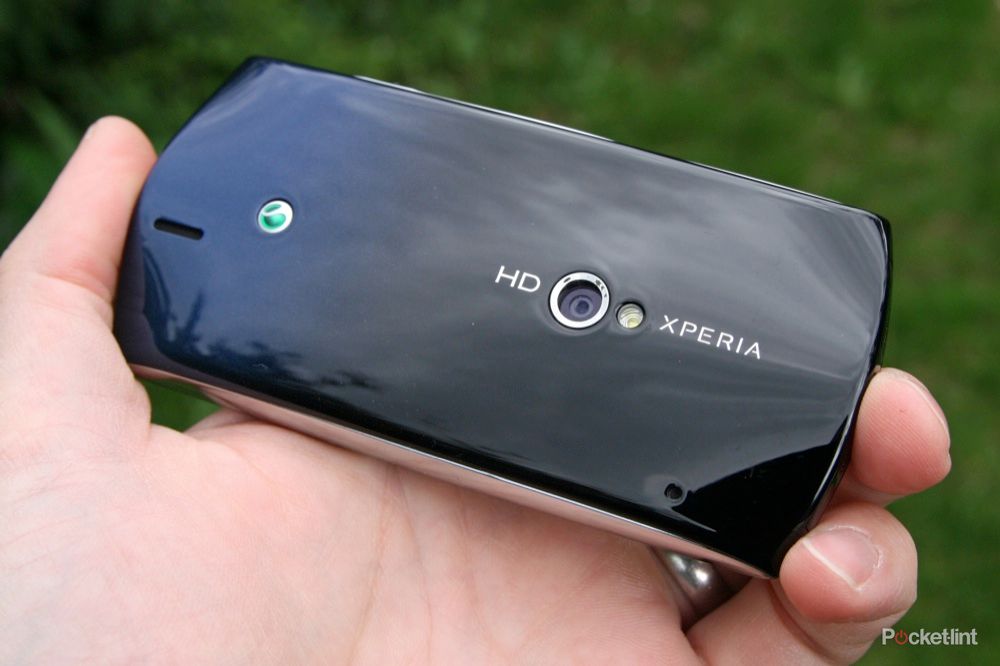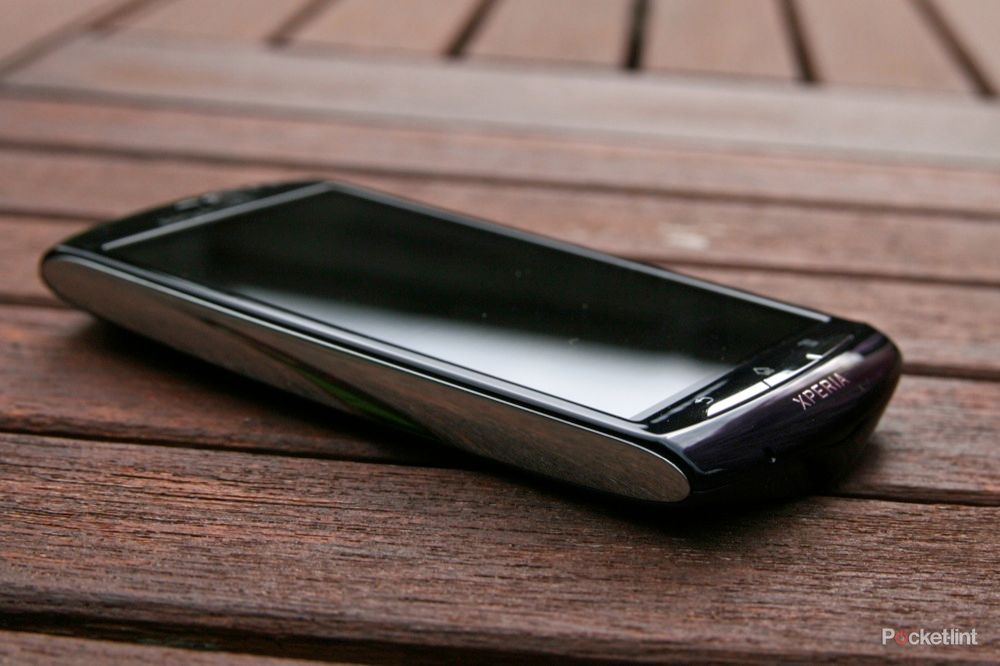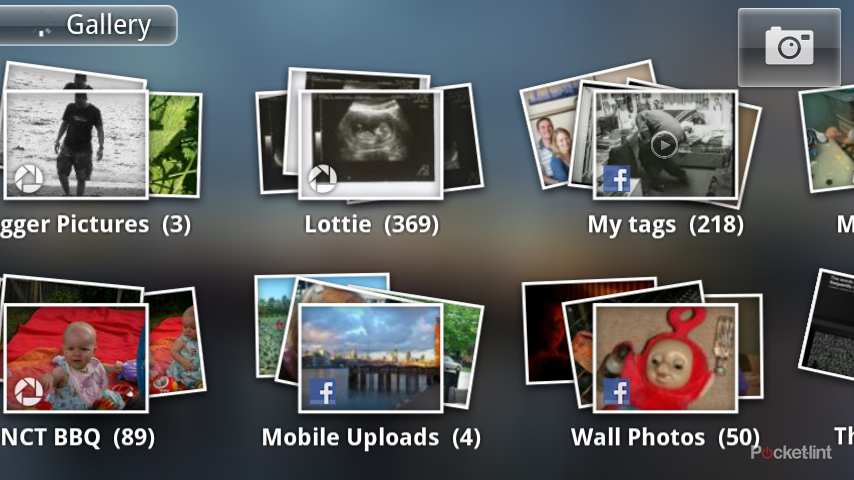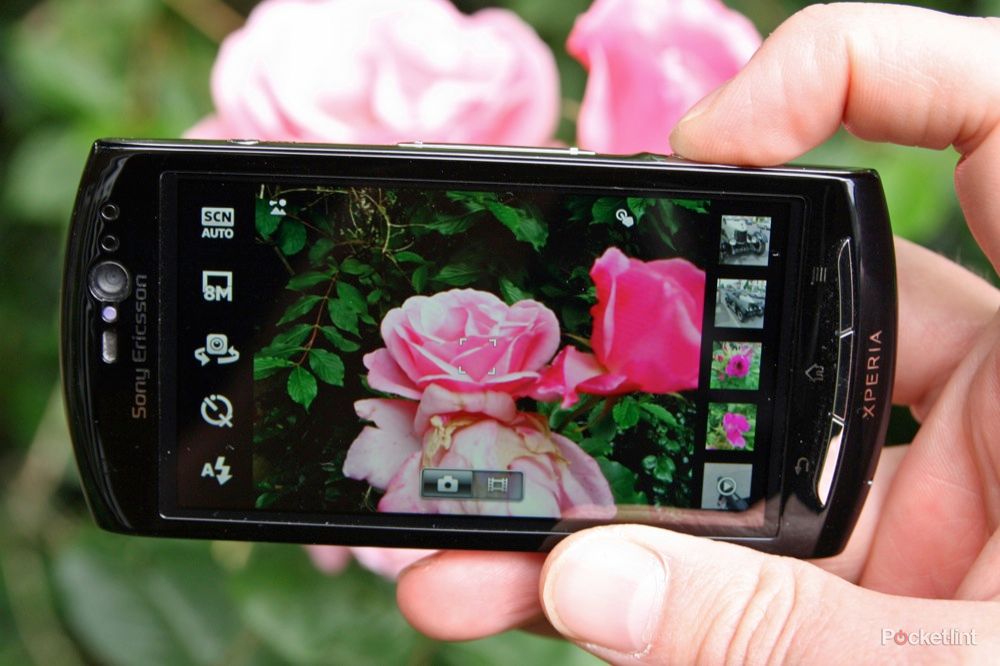The Sony Ericsson Neo (and QWERTY packing Pro) models didn’t get nearly the attention that was afforded to the Xperia Arc and the Xperia Play upon launch. While those other models are more distinct in their offering, the Xperia Neo lands on our review desk as something of A N Other Android device. It packs in some respectable specs, but with Sony Ericsson continuing to expand their line-up of Android handsets, are they now spreading themselves too thin?
Our quick take
Sony Ericsson struggled with Android devices in 2010, but their 2011 efforts look more promising. But we step away from the Xperia Neo thinking that things have moved on a little too fast. We like the Xperia Arc a lot, but it won’t compete with the likes of the Samsung Galaxy S II or the HTC Sensation at the top of the pile. We like the Xperia Neo, but it doesn’t feel as sophisticated as the HTC Desire S or, more worryingly, phones like last year’s original Samsung Galaxy S.
It’s a powerful enough handset, slotting somewhere into the upper mid range and we’d imagine that it will serve many well, but given the huge number of phones on offer, you have to be drawn to the features it offers: HDMI output, an up-to-date version of Android, a capable camera and reasonable battery life.
But we’d choose the larger Xperia Arc every time when opting for a Sony Ericsson handset. The larger, better, screen makes it a better browsing device, and the design is something to be admired. That leaves the Xperia Neo somewhere in the wilderness. It isn't a bad phone, but it doesn't scream out to us either.
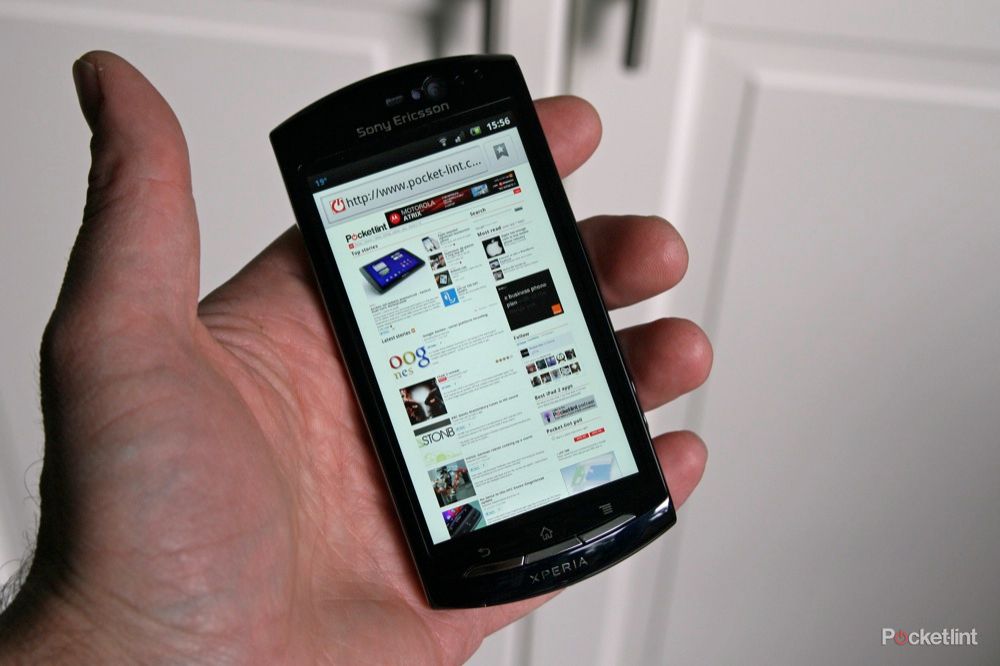
Sony Ericsson Xperia Neo - 3.5 / 5
| FOR | AGAINST |
|---|---|
|
|
Design
Part of the reason that Sony Ericsson have so many phones is probably down to the move from feature phones to Android smartphones. The Xperia Neo is every bit the evolution of the Vivaz, which Sony Ericsson pushed as a video device back in early 2010. The same ethos of “human design” can be found in the Neo, and like the Vivaz, we found it’s curved back great for placing down on a table and spinning the phone.
Aside from the opportunity this presents to play spin the bottle, it means it nestles down nicely into the palm of your hand. With the trend towards larger screens, the Xperia Neo feels decidedly compact, easily fitting into smaller hands. It still offers you a 3.7-inch screen in a body that measures 116 x 57 x 13mm, although it isn't the slimmest or most elegant phone around.
It is finished in plastics, so lacks the wow factor of something like the HTC Desire S, which might be a natural rival to the Neo, but it feels solid enough. The glossy plastic finish means that it is prone to fingerprints. Sony Ericsson have chosen to cover the micro HDMI and Mini-USB ports on the top of the device with little flaps. It helps keep them free from debris, but the USB cover soon becomes irritating each time you want to plug it in to charge. We managed to get through most days on a single charge, which is better than some phones.
Otherwise you have the common arrangement of three hard buttons beneath the screen offering back, home and menu options, whilst the remainder of the hard controls run down the right-hand side of the phone, in this case giving you the standby button, volume and a dedicated camera key.
What’s inside?
In terms of positioning, the Sony Ericsson Xperia Neo rolls out with a 1GHz Qualcomm Snapdragon MSM8255 chipset and 512MB RAM, meaning this is a relatively powerful device, sitting just under the latest single and dual core devices we’ve seen this year. It’s the same configuration as the Xperia Arc, so the experience is comparable.
That means that in use the Xperia Neo is slick and fast in its handling of the Android 2.3.3 (at the time of writing), although as with other Sony Ericsson devices, it has been heavily skinned, so much of the Android look and feel has been tinkered with. You also don’t quite get the snap that the dual core devices now offer, however a touch of lag opening apps is acceptable as the experience seems stable enough throughout.
In the grand scheme of things, Sony Ericsson’s customisation sits somewhere between HTC and Samsung. Superficially Sony Ericsson tinker with just about everything, but it isn’t as encompassing, or accomplished, as HTC Sense. At the same time, it goes further than Samsung’s TouchWiz interface which is a relatively light touch, and as a result it sits in a sort of user interface wilderness, with many of the changes seemingly made to continue the look and feel found in Sony Ericsson’s phones of old. It doesn’t always feel as sophisticated as some rivals, but it works well enough, with the odd nice feature, like the widget overview.
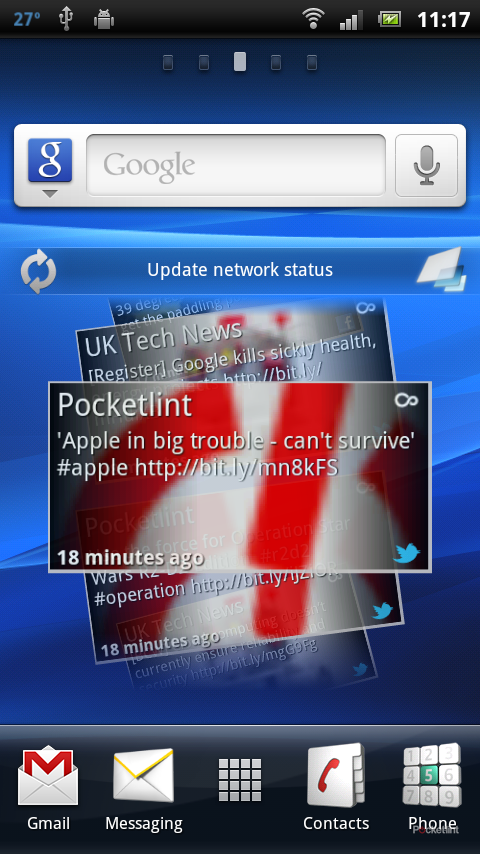
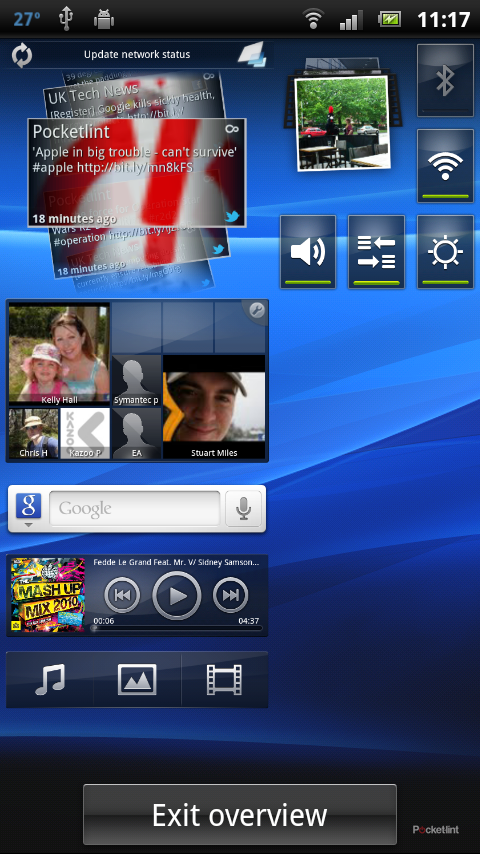
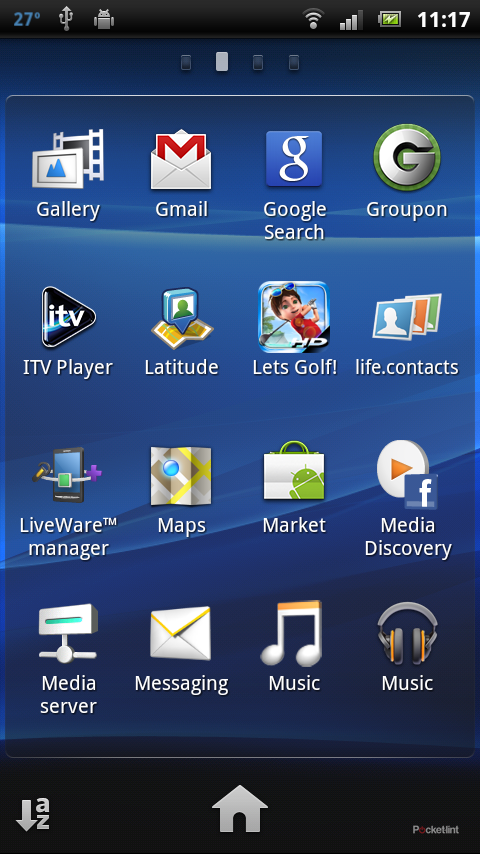
In terms of calling, we had no problem with the Xperia Neo: calls came across loud and clear and the external speaker offers up plenty of volume. Storage comes in on the light side, with the reported 1GB of internal memory mostly used up, offering you 320MB spare. The microSD card slot will support cards up to 32GB, pretty much essential if you plan to carry any media around with you.
Facebook inside your Xperia
Sony Ericsson recently made a point of highlighting the integration of Facebook into their Xperia devices. On one plane this adds functionality to their social network aggregating Timescape app that we’ve been calling for from its first inception on the Xperia X10. On another plane, it adds a range of functions that make Facebook more deeply integrated.
Overall we like the new additions in this area, including your Facebook albums slotting into the Gallery, lock screen Facebook notifications, the ability to Like music or photos and more Facebook information in your contacts. In a way it’s as much a reaction to the deeper Facebook integration of the INQ Cloud Touch or HTC Salsa as anything else.
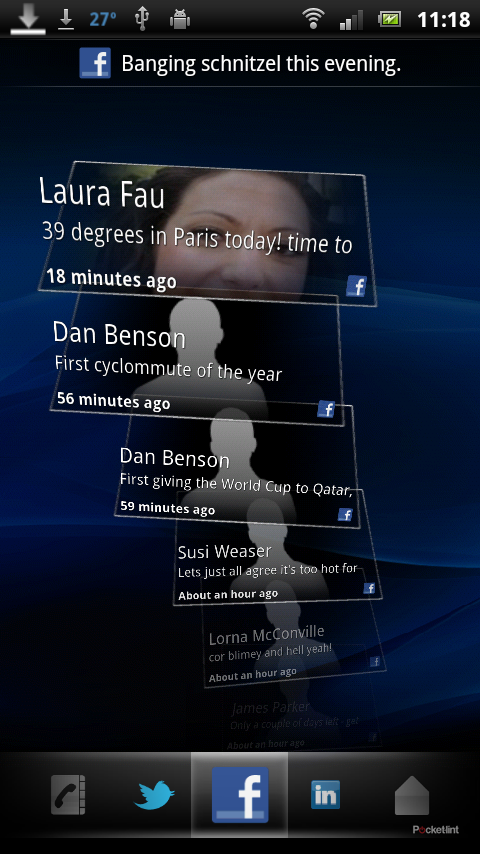
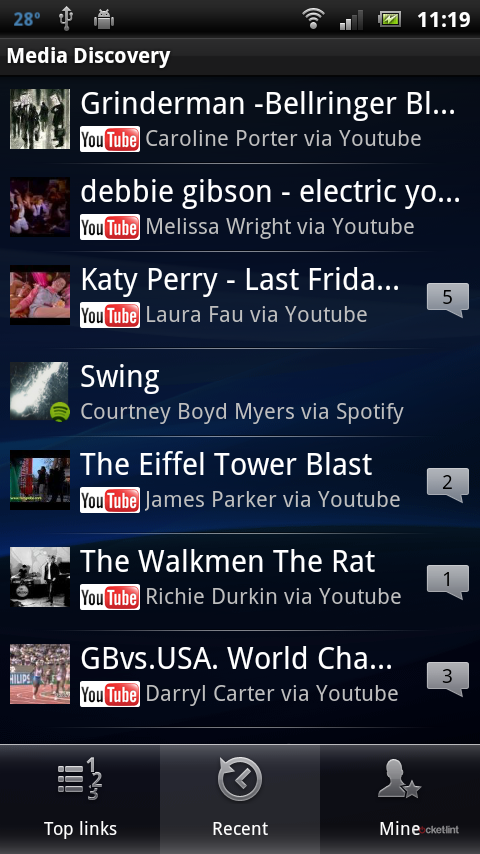

One new and unique app is a Media Discovery app, which scours Facebook for “media” shared by your friends. It’s an interesting time-filler, giving you neat links to the sharing source for that media. In our case we found that everything had come from Spotify or YouTube, with the respective app opening to play (Spotify you’d have to install and have a subscription for).
If Facebook is your thing and you like the tiles approach that Timescape offers, then things are better now. But if you’re a Twitter user then you still have a gaping black hole: although Timescape will feed you Twitter updates in tiles, when you press to read the whole of the update, it takes you through to the Twitter mobile site. We’ll bet our shirts that Sony Ericsson soon announces that Twitter is living inside your Xperia too.
A quick dive into the Android Market, which will supply you with an increasingly competitive run of apps, and you’ll find that Sony Ericsson have some of their own available. One is the LinkedIn integration for Timescape, adding an extra string to its bow. Another worth looking at is their Life Contacts beta, which creates a neat people widget around common contacts.
Media madness
Sony haven’t had a great time of things recently following the high-profile hacks on their PlayStation Network. One of the affected services was their music service Qriocity, a link for which can be found in the menu, to prompt you to download the app. It isn’t unique to Sony Ericsson as you can download it on other Android devices too.
Sony Ericsson’s Music player is reasonable but feels as though it misses out on the more important features. It offers you a content search (via the infinity button, also found elsewhere in the phone), which will let you find related content online, essentially on YouTube. However, you don’t get lockscreen controls for music, or controls from the notification bar, surprising from a company that made such great Walkman phones in the past.
Videos are served up in the Gallery and Facebook videos are pulled down if you have any. Ironically, the phone won’t play Facebook videos out of the box, which feels like something of an oversight. Video format support isn’t that wide either, struggling to tackle many of our regular test videos. It had no problem with common SD MPEG4 files, but the likes of DivX aren’t catered for from the off.
There is a Media Server app which offers to share your content, but there is no streaming option, so you can’t collect content you might have sitting on a PC or home server. We easily stepped round this using Skifta, but it’s a feature we’d expect Sony Ericsson to build in: after all, HTC, Samsung and LG all do, and this phone is powerful enough to handle it.
The display sees the Mobile Bravia Engine option which claims to enhance performance. In our tests we could see little real difference, but one thing we did notice was that the Neo misses out on auto brightness option common on Android phones and a power-saving favourite.
But that’s not the biggest problem we have with the display. As mentioned it is 3.7-inches, with a resolution of 854 x 480, giving it a 16:9 aspect and a pixel density of 264ppi. This is all great, but the display does look a little yellow to our eyes, not giving you the brilliant white clarity you’ll find elsewhere. When displaying whites the pixel lines are visible so the final effect isn’t as striking as we'd want it to be.
The screen doesn’t give you as much space for browsing the Internet, but it’s a respectable enough browser overall. The keyboard in portrait feels a little cramped and the run of alternative characters accessed through a long press of each key are a little too exotic: we can’t see many native English users needing many of these accented key options. A third party keyboard, such as SwiftKey, will give you a much more convenient solution.
Caught on film
Having mentioned the Vivaz earlier - one of the first mobile phones to offer 720p video capture - we’re expecting a lot from the Xperia Neo when it comes to the cameras. Around the back there is an 8-megapixel camera with a single LED “flash” and on the front there is the typical camera offering VGA video from a fixed focus unit.
Sony Ericsson have completely restyled the camera interface and added a couple of nice features into the mix. There are touch controls on the screen for the main functions (along with the dedicated button on top) although the majority of options are accessed via the menu button. These options cover major settings, but Sony Ericsson haven’t stepped out and added any fun features, which this camera is crying out for.
But what you do get is good. The Exmor R sensor that Sony Ericsson headline is capable of capturing some cracking daylight shots. Low light shooting is marred by noise as you’d expect and the flash doesn’t effectively give you any range in low light. With autofocus and auto scene selection it will do everything for you, but occasionally we found that the scene selection makes an odd choice, resulting in a photo that doesn’t quite look authentic.
But outside of that, detail is good and it is capable of offering some great colours. There is a smile shot option - great for kids - and a touch focusing option which helps get things just so when it comes to composition.
Video maxes out at 1280 x 720 pixel at 30fps and is pretty good quality too. It won’t match your camcorder, but we found the results look good enough when played back through that HDMI port (which mirrors the phone on the connected screen). Focusing in-video is continuous but is slow, which has both pros and cons - someone walking in front of the camera won’t shift the focus, but point it at something new and it takes a while to sharpen up again.
To recap
We're not certain who the Neo will appeal to. It is outclassed by the Arc, but in the compact handset running is bettered by the likes of the HTC Desire S. There are some nice touches though and the camera performance is strong

